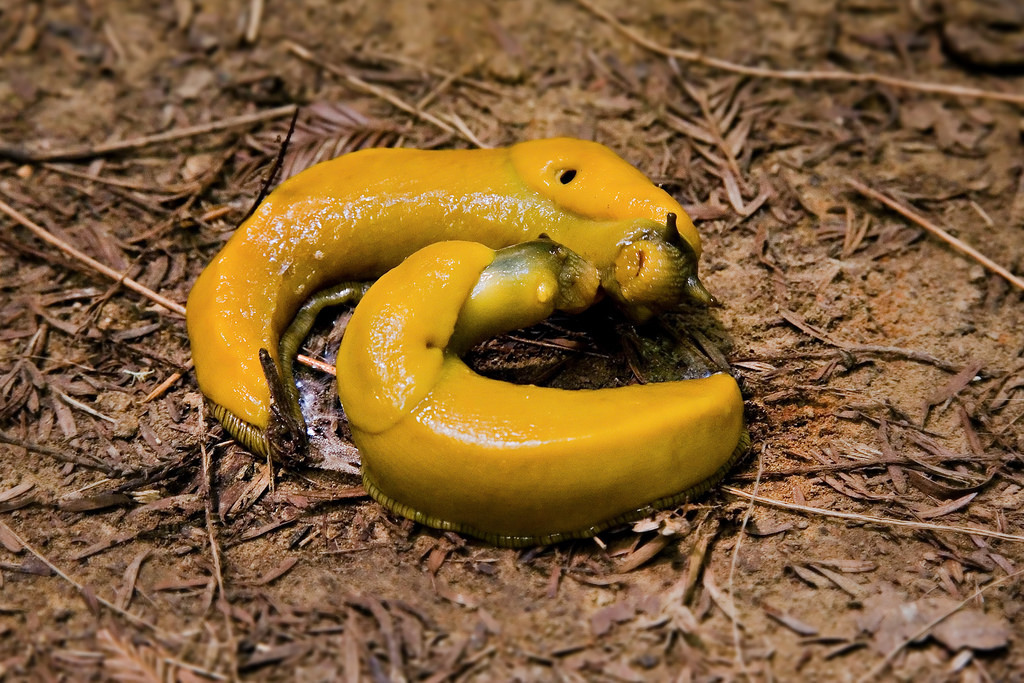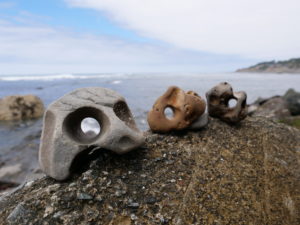Back when I used to teach children about nature, I often relied on a “hook” to keep them focused. Slapping myself with stinging nettle was a great attention grabber, but banana slugs worked just as well and didn’t hurt as much. I’d find one and ask the kids, “How do you really know it’s a banana slug? It could be a raspberry slug, or even a peach slug. There is only one way to find out for sure.” They would scream as I carefully licked the entire body of the slug. Roll-ing my eyes upward as if I were tasting a fine wine, I would announce, “Yep, that’s a banana slug.”
If I licked too hard and got some of the slug’s slime on my tongue, I would experience directly one of the many benefits of being slimy: protection from predators. Not only is the slime difficult to wipe off and unpalatable to eat, but it also contains an anesthetic that can numb the slug nibbler. However, not all predators are deterred—shrews love to eat banana slugs, and raccoons will roll slugs around in the dirt to help get them down the hatch.
The slime of these ancient animals is a truly amazing and useful substance. It allows the slugs to retain moisture and is especially important when they estivate—become dormant—during the dry summer months. They can roll up into a smaller mass with a protective slime shield and wait comfortably for the next fog or rain. The slime also helps the slugs get where they need to go, whether that’s squeezing into a tight space or sliding across the forest floor. They use the slime to adhere to steep surfaces and can even hang upside down from slime threads.
Slime is also an important part of the slugs’ mating process, as the slow-moving creatures follow mucous trails in order to find each other and achieve hermaphroditic sexual bliss. They often eat each other’s slime during courtship and then wrap themselves in a nuptial bed of slime during the actual reproductive act.
Slug slime was originally thought to behave like a bowl of spaghetti—the more tangled the strands, the thicker the mucus. But researchers studying the chemistry of slug slime at the University of Washington (where else?) have found that it is a highly organized polymeric material that can absorb water extremely rapidly—up to 100 times its initial volume. Once the mechanisms and molecules of slug slime are better understood, researchers foresee numerous potential applications in materials science and bioengineering, such as pollutant traps for sewage treatment plants, effective water-based lubricants, and improved surgical implants and wound coverings. Hurray for the slugs!





